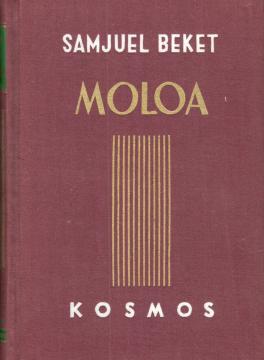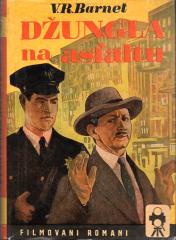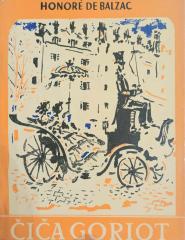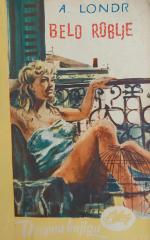
Moloa
Der Roman Molloy (1951) ist neben Malone Dies und Der Namenlose der erste Teil von Becketts berühmter Trilogie. Es ist in zwei Teile gegliedert, die jeweils aus der Perspektive eines anderen Erzählers erzählt werden: zuerst Molloy, dann Jacques Moran.
Im ersten Teil schreibt der alte und körperlich gebrechliche Molloy aus dem Zimmer seiner Mutter, ohne Erinnerung daran, wie er dorthin gekommen ist. Er erinnert sich an seine Reise auf der Suche nach seiner Mutter, auf der er verschiedenen Charakteren begegnet und in absurde Situationen gerät. Sein Alltag ist geprägt von bizarren Gewohnheiten, wie etwa der rituellen Bewegung von Kieselsteinen in seinen Hosentaschen, die sein Bedürfnis nach Ordnung in einer chaotischen Welt symbolisieren.
Der zweite Teil handelt von Moran, einem Detektiv, der von Gabers Vorgesetztem geschickt wurde, um Molloy zu finden. Moran, zunächst organisiert und diszipliniert, verliert nach und nach die Kontrolle über sich und seine Aufgabe. Seine Reise wird zu einer Reise der Selbstbeobachtung und seine Wandlung spiegelt die grundlegenden Themen des Romans wider: den Verlust der Identität und die Vergeblichkeit der menschlichen Suche nach Sinn.
Durch Molloy erforscht Beckett existenzielle Themen wie Identität, Erinnerung und die Absurdität der Existenz. Der Roman ist bekannt für seinen experimentellen Stil, seine langen Monologe und seine fragmentarische Erzählweise, die das Gefühl der Desorientierung und Sinnlosigkeit noch verstärkt.
Molloy ist ein Schlüsseltext der modernistischen Literatur und ein bedeutender Beitrag zur Philosophie des Existentialismus, der den Leser dazu einlädt, über die Natur der Existenz und Identität nachzudenken.
Angeboten wird ein Exemplar





